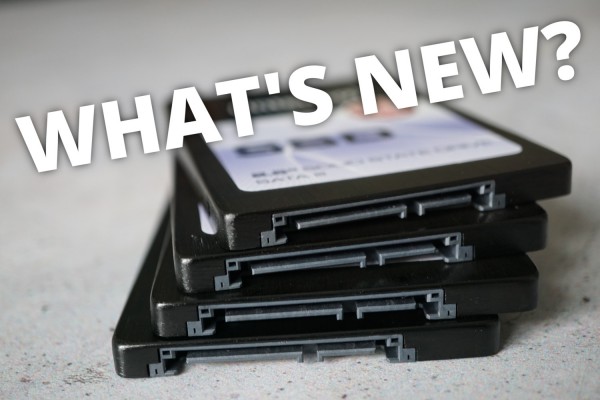Intel Thunderbolt 3: One for all
Thunderbolt 3 is a multifunctional interface that is directly compatible with USB Type-C, but also supports DisplayPort and PCIe. For example, external graphics cards can be connected via PCI Express, while suitable connection cables allow to address various screen inputs. Thanks to a transfer speed of up to 40 Gbit/s it is even possible to reproduce two times 4K resolution, while simultaneously transferring data via USB 3.1. In order to promote and spread the interface, Intel has announced to make the standard royalty-free and release the specifications for the industry.
Variations of SSDs: The interfaces
For a long time the SATA interface was the standard for SSDs. However, since SSDs work differently than HDDs for which SATA was originally developed, a speed increase is no longer possible. This requires a whole new protocol. Depending on which interfaces are available on the PC, SSDs with SATA 6G, its further development SATA Express (SATAe), m.2 or PCI Express (PCIe) can be used.
In addition to M.2 and 2,5": New SSD form factor "ruler"
Intel has recently introduced a new form factor for SSDs, which is named "ruler". As the name suggests, it has a long, flat shape. Thanks to the dimensions of 325.35 x 36.8 x 9.5 mm, up to 32 ruler SSDs fit into a 1U server. With a planned capacity of 32 TB per SSD (currently 16 TB), such a rack server would reach a storage capacity of 1 PB (petabyte). First SSDs in the new "ruler" form factor are to be released by the end of the year, possibly there will also be modules with double height.
Prices remain high: Searching for alternatives to DRAM
The fact that memory prices have risen considerably in the last month is well known. Unfortunately, there is still no end in sight – it is even expected to continue like this in 2018 – as the most important manufacturers are using more and more parts of their production capacities for server and smartphone storage. Solutions to the problematic memory shortage would, for example, be a more efficient architecture or an adaption of the firmware and software in order to improve the use of existing memory. More considerations on this subject can be found here:







